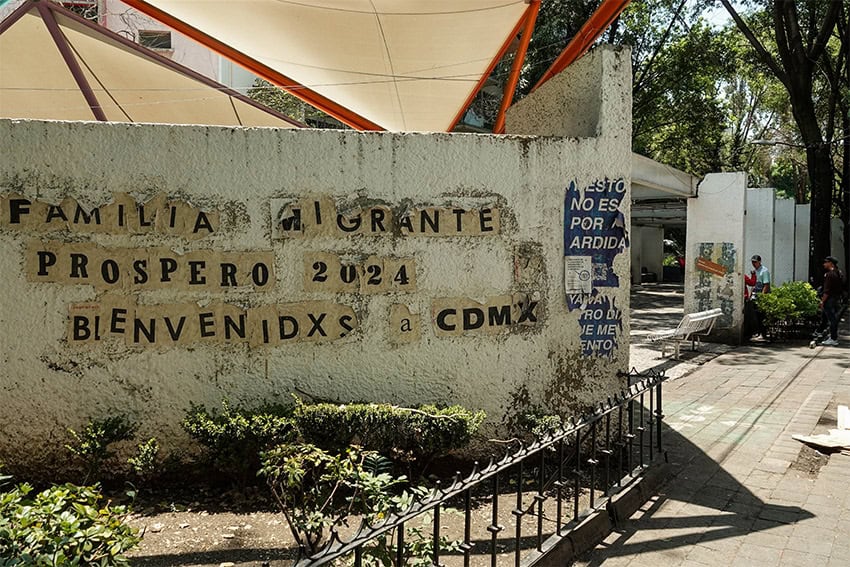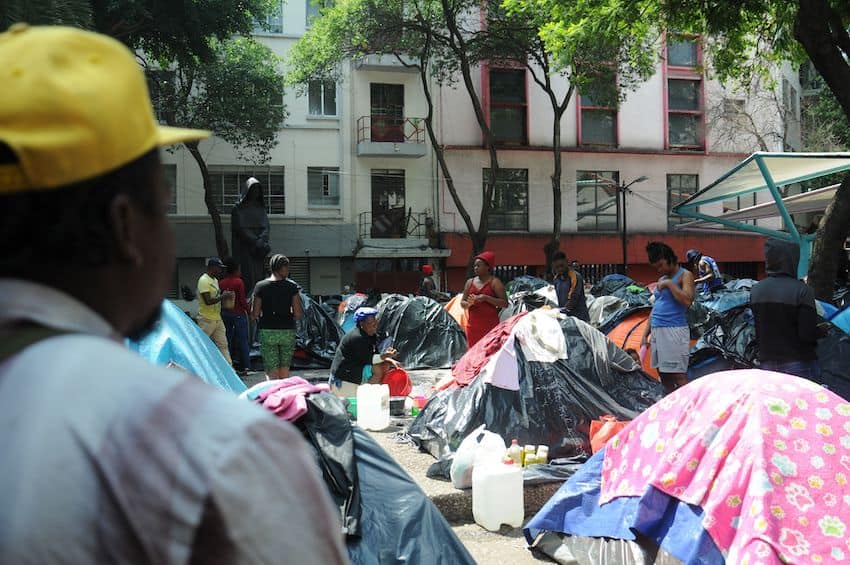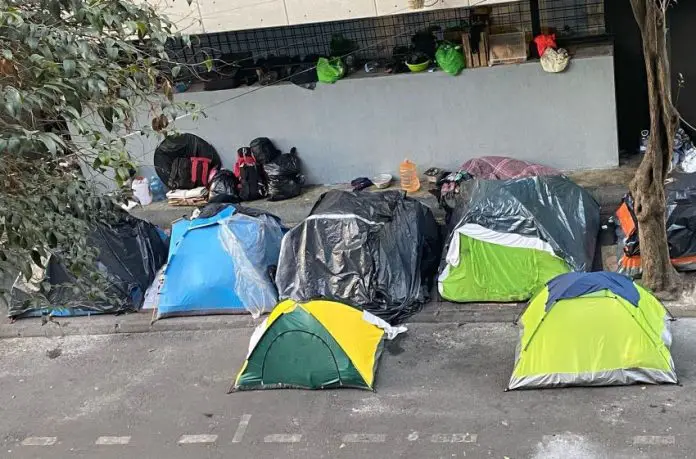Mexican authorities cleared a migrant encampment in downtown Mexico City last week, removing tents and relocating more than 400 migrants who had been living in Giordano Bruno Plaza.
The operation, carried out by the National Institute of Migration (INM) and the National Guard, aimed to address concerns about the growing number of migrants camping out in the Juárez neighborhood at the city’s center.
Residents in the vibrant, cosmopolitan area had long complained of encampments occupying the largely paved pedestrian zone. Last May, dozens of migrants were evicted from the same plaza, only to return a day later to set up a new camp.
This time, authorities directed the migrants to get on buses heading to states such as Puebla, Morelos, Hidalgo, Aguascalientes and Chiapas, according to destination signs on each bus, although later reports said the first five buses all headed to Chiapas.
President Andrés Manuel López Obrador addressed the migrant situation at his Monday morning press conference, asserting that Mexico is not in crisis.
“There is no overflow of migrants into Mexico that could cause a problem,” López Obrador said.

He emphasized that deportations have not increased significantly and that many migrants are being integrated into the Mexican economy, citing the example of 35,000 Guatemalans working in Quintana Roo.
The president highlighted Mexico’s efforts to address the root causes of migration and criticized U.S. policies, which he claimed lack serious initiatives to resolve the issue.
“Where we have the most difficulty is with countries with which the United States does not want to seek solutions or agreements,” he said. “I am referring to Cuba, Venezuela, Haiti, Nicaragua and, recently, Guatemala.”
As an example of Mexico’s commitment to tackle the underlying issues driving migration, he discussed a plan to extend the Maya Train into Belize and Guatemala, potentially creating what he said would be 100,000 jobs in those countries.
The removal of the migrant camp involved pulling up tents and tarps, and providing migrants with assistance as they gathered their things. The 432 people in the camp were reportedly from Haiti, Venezuela and Central America, with some homeless Mexicans mixed in; most of the foreigners had documents allowing them to remain in Mexico, and simply agreed to leave.
Many of the migrants had submitted their asylum paperwork and were waiting for responses from the Mexican Commission for Aid to Refugees (COMAR).
Gerardo Talavera, director of the Casa Refugiados program, told the online news outlet Animal Político that the regularization of immigration status is not linked to any one location.

However, he added, for those who had already started the process in Mexico City, “part of their procedure includes not leaving the federal entity, so when they are taken out of here, [they] lose their progress. That is serious.”
Talavera said the operation caused a lot of confusion because many migrants were not given “adequate information.” He said some migrants were forced onto buses without being asked.
Last week, U.S. President Joe Biden issued an executive order preventing migrants from making asylum claims at the U.S.-Mexico border.
Last year, Mexico recorded 782,176 encounters with undocumented migrants, according to the International Organization for Migration (IOM). That marked a 77% increase over 2022, when the IOM recorded 441,409 such encounters.
In 2023, COMAR received a record 136,934 asylum applications from January through November, breaking the mark of 129,658 set for all of 2021. The final total for 2023 has not been confirmed.
COMAR noted that 22,279 migrants in Mexico City requested asylum between January and August 2023, double the number for all of 2022.
With reports from La Jornada, Animal Politico and AP
